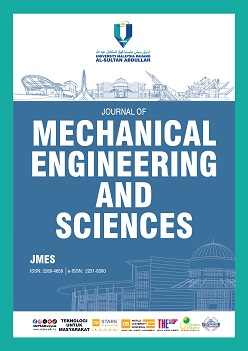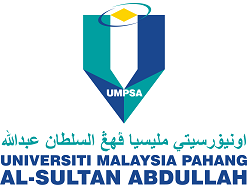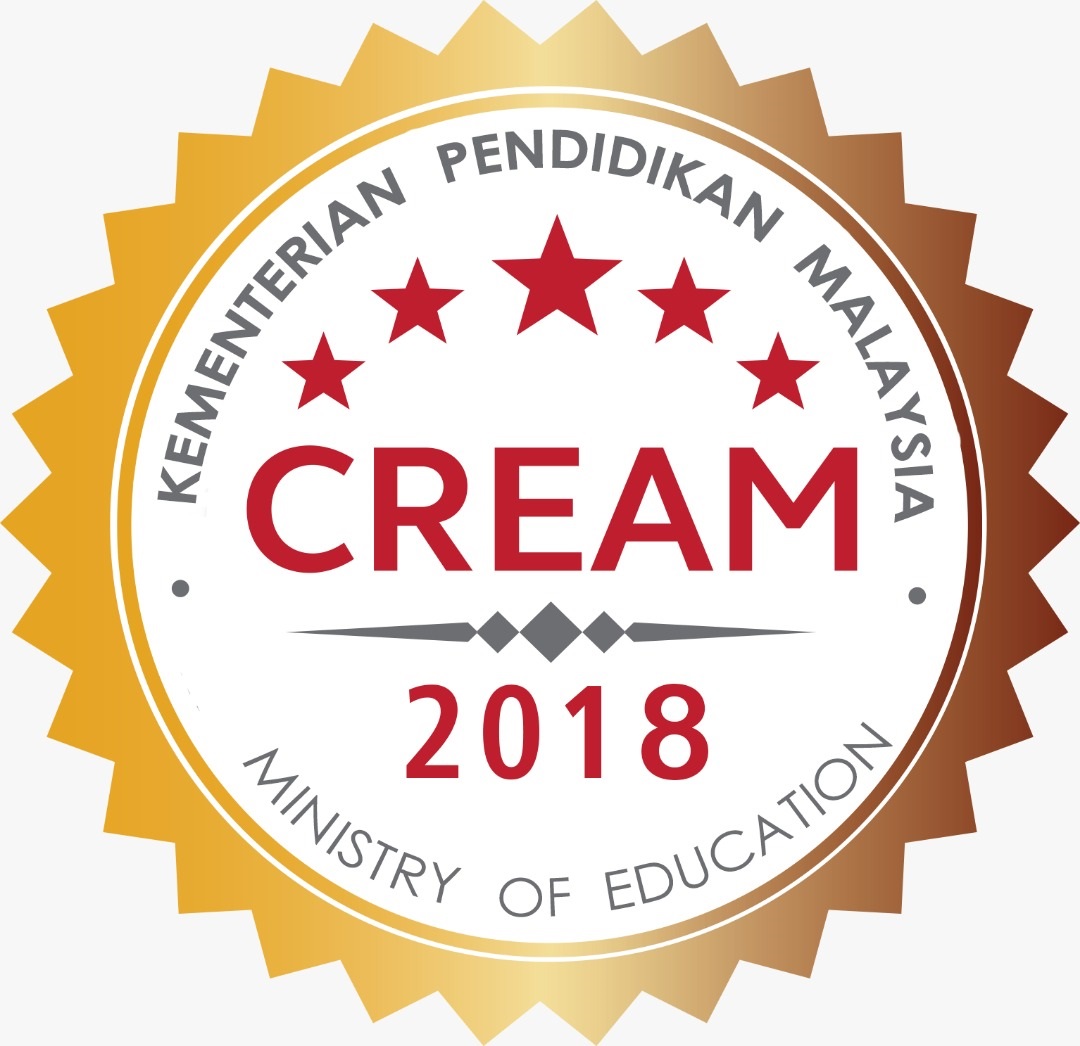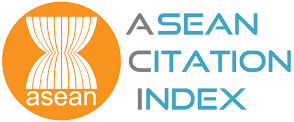Optimization of maskless electrochemical microtexturing
DOI:
https://doi.org/10.15282/jmes.19.1.2025.5.0822Keywords:
Electrochemical microtexturing, micro circular pattern, EDAS, machining characteristicsAbstract
Surface microtexturing method is utilized to improve the vital functions in various engineering disciplines like tribological, biocompatibility, and sustainability. The generation of microtexturing is difficulty by other advanced micromachining methods such as heat affecected zone in laser micromachining and micro electric discharge machining, and low production efficiency in abrasive jet micromachining. The microtexturing with micro circular pattern, generated using maskless electrochemical microtexturing in indigenously developed experimental setup is investigated. The developed setup consists of experimental cell, power connections and electrolyte flow system. The SU-8 2150 insulated textured tool is more advantageous for producing microstructures. Hence, it was reused many times for microtextured production. The influence of various process parameters like voltage, duty ratio, frequency, inter electrode gap (IEG), flow rate and machining time on numerous important microtexturing characteristics such as material removal rate (MRR) overcut, depth and surface roughness is investigated. Furthermore, a new and efficient method i.e. evaluation based on distance from average solution (EDAS) was used to identify the optimal combination of microtexturing process parameters. The achieved optimal parameters are voltage of 10 V, duty ratio of 40%, frequency of 5 kHz, IEG of 100 μm, flow rate of 5 m3/h and machining time of 5 minutes for manufacturing of accurate micropatterns. From the confirmation experiments using EDAS, the best machined characteristics are MRR of 5.2 mg/min, overcut of 25.41 µm, depth of 8.2 µm and surface roughness, Ra of 0.0278 µm.
References
[1] X. M. Li, D. Reinhoudt, M. Crego-Calama, “What do we need for a superhydrophobic surface? A review on the recent progress in the preparation of superhydrophobic surfaces,” Chemical Society Reviews, vol. 36, no. 8, pp. 1350-1368, 2007.
[2] E. Lamers, X. F. Walboomers, M. Domanski, J. Riet, F. C. M. J. M. van Delft, R. Luttge, et al., “The influence of nanoscale grooved substrates on osteoblast behaviour and extracellular matrix deposition,” Biomaterials, vol. 31, pp. 3307–3316, 2010.
[3] A. Amanov, I. S. Cho, Y. S. Pyoun, C. S. Lee, I. G. Park, “Micro-dimpled surface by ultrasonic nanocrystal surface modification and its tribological effects,” Wear, vol. 286-287, pp. 136–144, 2012.
[4] T. Burzynski, M. Papini, “Level set methods for the modeling of surface evolution in the abrasive jet micromachining of features used in MEMS and microfluidic devices,” Journal of Micromechanics and Microengineering, vol. 20, no. 9, p. 085004, 2010.
[5] J. Zhang, Y. Meng, “A study of surface texturing of carbon steel by photochemical machining,” Journal of Materials Processing Technology, vol. 212, no. 10, pp. 2133-2140, 2012.
[6] S. Kunar, B. Bhattacharyya, “Influence of various flow methods during fabrication of micro ellipse pattern by maskless electrochemical micromachining,” Journal of Manufacturing Processes, vol. 35, pp. 700-714, 2018.
[7] A. G. Demir, B. Previtali, N. Lecis, “Development of laser dimpling strategies on TiN coatings for tribological applications with a highly energetic Q- switched fibre laser,” Optics & Laser Technology, vol. 54, pp. 53-61, 2013.
[8] S. Kunar, B. Bhattacharyya, “Electrochemical microsurface texturing with reusable masked patterned tool,” Engineering Science and Technology, an International Journal, vol. 21, no. 5, pp. 1095-1103, 2018.
[9] S. Kunar, B. Bhattacharyya, “Investigation on surface structuring generated by electrochemical micromachining,” Advances in Manufacturing, vol. 5, no. 3, pp. 217– 230, 2017.
[10] K. L. Senthil Kumar, R. Sivasubramanian, K. Kalaiselvan, “Selection of optimum parameters in non-conventional machining of metal matrix composite,” Port Electrochimica Acta, vol. 27, no. 4, pp. 477–486, 2009.
[11] A. Noorul Haq, P. Marimuthu, R. Jeyapaul, “Multi response optimization of machining parameters of drilling Al/SiC metal matrix composites using grey relational analysis and Taguchi method,” International Journal of Advanced Manufacturing Technology, vol. 37, pp. 250-255, 2008.
[12] C. Zhao, P. Ming, X. Zhang, G. Qin, J. Shen, L. Yan, et al., “Through-mask electrochemical micromachining with reciprocating foamed cathode,” Micromachines, vol. 11, no. 2, p. 188, 2020.
[13] M. Wang, Y. Shang, K. He, X. Xuefeng, C. Guoda, “Optimization of nozzle inclination and process parameters in air-shielding electrochemical micromachining,” Micromachines, vol. 10, p. 846, 2019.
[14] N. Lusi, D. R. Pamuji, A. Afandi, G. S. Prayogo, “Optimization design of electrochemical machining process of SKD11 tool steel using weighted principal component analysis (WPCA),” in IOP Conference Series: Materials Science and Engineering, vol. 854, p. 012024, 2020.
[15] D. S. Patel, V. Agrawal, J. Ramkumar, V. K. Jain, G. Singh, “Micro-texturing on free-form surfaces using flexible-electrode through-mask electrochemical micromachining,” Journal of Materials Processing Technology, vol. 282, p. 116644, 2020.
[16] J. N. Krishnan, J. Deepak, P. Hariharan, “Multi-response optimization of electrochemical micromachining on masked SS304,” Engineering Research Express, vol. 2, no. 1, p. 015041, 2020.
[17] R. Thanigaivelan, R. Arunachalam, “Optimization of process parameters on machining rate and overcut in electrochemical micromachining using grey relation analysis,” Journal of Scientific & Industrial Research, vol. 72, pp. 36-42, 2013.
[18] B. Juodagalvienė, Z. Turskis, J. Šaparauskas, A. Endriukaitytė, “Integrated multi-criteria evaluation of house’s plan shape based on the EDAS and SWARA methods,” Engineering Structures and Technologies, vol. 9, pp. 117-125, 2017.
[19] M. K. Ghorabaee, E. K. Zavadskas, L. Olfat, Z. Turskis, “Multi-criteria inventory classification using a new method of evaluation based on distance from average solution (EDAS),” Informatica, vol. 26, pp. 435-451, 2015.
[20] D. Zindani, S. R. Maity, S. Bhowmik, “Fuzzy-EDAS (Evaluation based on distance from average solution) for material selection problems,” in Lecture Notes on Multidisciplinary Industrial Engineering, pp. 755-771, 2019.
[21] A. P. Tiwary, B. B. Pradhan, B. Bhattacharyya, “Application of multi-criteria decision-making methods for selection of micro-EDM process parameters,” Advances in Manufacturing, vol. 2, pp. 251-258, 2014.
Downloads
Published
Issue
Section
License
Copyright (c) 2025 The Author(s)

This work is licensed under a Creative Commons Attribution-NonCommercial 4.0 International License.






